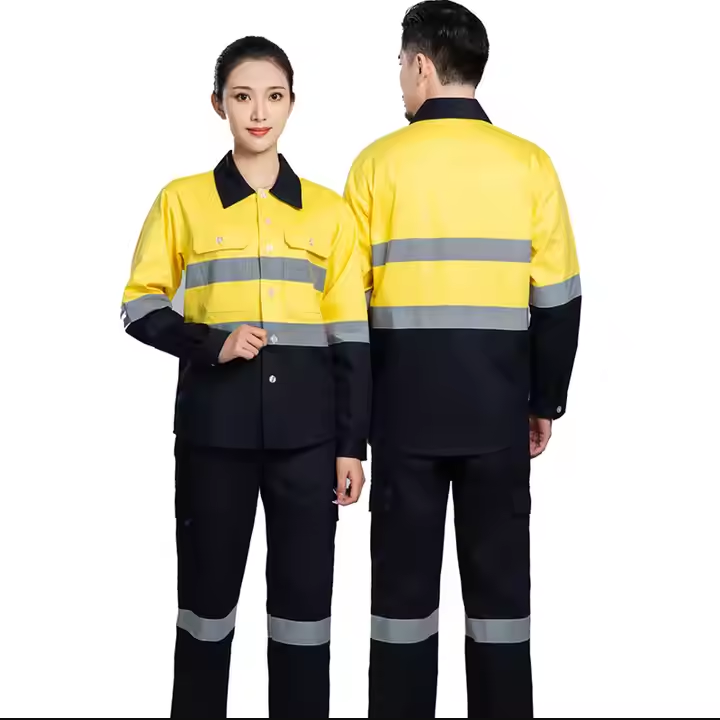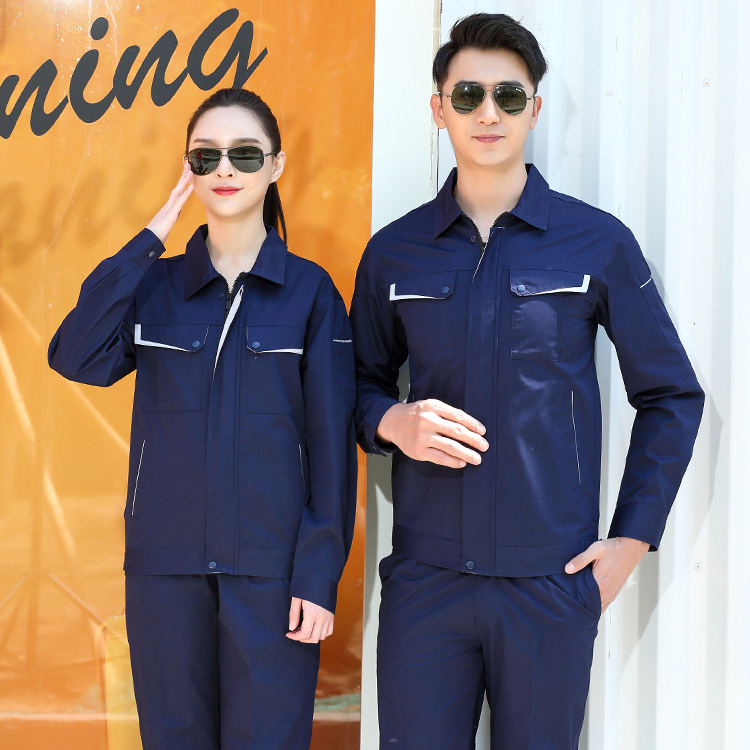What color do maintenance workers wear?
Author:HAIYUAN TIME:2025-08-01Read:
The colors worn by maintenance workers depend on safety requirements, industry standards, and workplace policies, but here's a clear breakdown of common practices:
1. High-Visibility Colors (Most Common)
- Fluorescent Yellow-Green or Orange:
- Why: Maximizes daytime visibility (ANSI/ISEA 107 Class 2/3 standards).
- Used in: Construction sites, roadwork, warehouses, airports, or any area with moving vehicles/machinery.
- Details: Often paired with reflective silver stripes for night visibility.

2. Dark & Stain-Hiding Colors
- Navy, Charcoal, or Black:
- Why: Conceals grease, oil, and dirt in industrial settings (e.g., mechanics, factory equipment repair).
- Common in: Indoor workshops, automotive garages, manufacturing plants.

3. Industry-Specific Colors
- Utilities (Electric/Gas):
- Blue or Gray: Standard for technicians (e.g., HVAC, plumbing).
- Aircraft Maintenance:
- Light Gray or Beige: Reduces heat absorption in hangars.
- Hospital/Facility Maintenance:
- White or Light Blue: Matches clinical environments.
Key Factors Influencing Color Choice
| Factor |
Impact on Color Selection |
| Safety Risks |
High-traffic/dark areas → Fluorescent colors |
| Stain Resistance |
Oily/dirty tasks → Dark colors (navy, black) |
| Company Branding |
Custom uniforms → Logo-matching colors (e.g., red for Coca-Cola) |
| Heat/Comfort |
Hot environments → Light colors (reflects sun) |
| Industry Norms |
Aviation → Gray; Utilities → Blue |
When Bright Colors Are REQUIRED
- Working near forklifts, cranes, or traffic.
- Low-light areas (warehouses, tunnels).
- Emergency response roles.
Regulatory Note: OSHA (U.S.) and EU EN ISO 20471 mandate hi-vis gear in high-risk zones.
Exceptions to Avoid
- ❌ Red: Rarely used (camouflages blood stains).
- ❌ Camouflage: Banned on most sites (safety confusion).
- ❌ All-White: Impractical for dirty tasks (shows stains).
Pro Tip
Maintenance teams often use two-in-one solutions:
Example: Dark navy work pants + fluorescent yellow vest (removed indoors).
This balances visibility needs with practicality for messy tasks.
For optimal safety, always prioritize ANSI-certified hi-vis colors in hazardous environments. If uniforms are customizable, integrate reflective strips into darker fabrics for flexibility.

